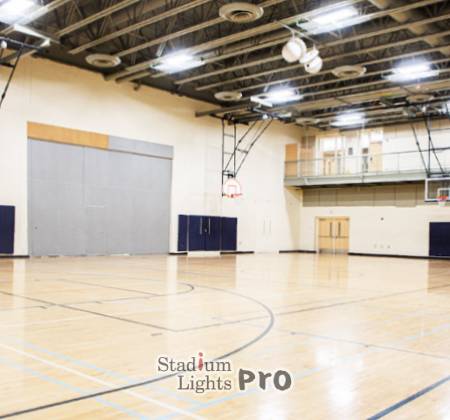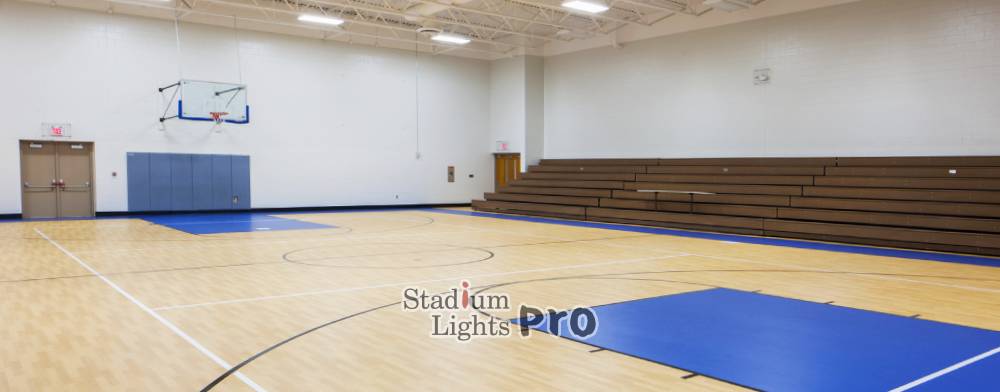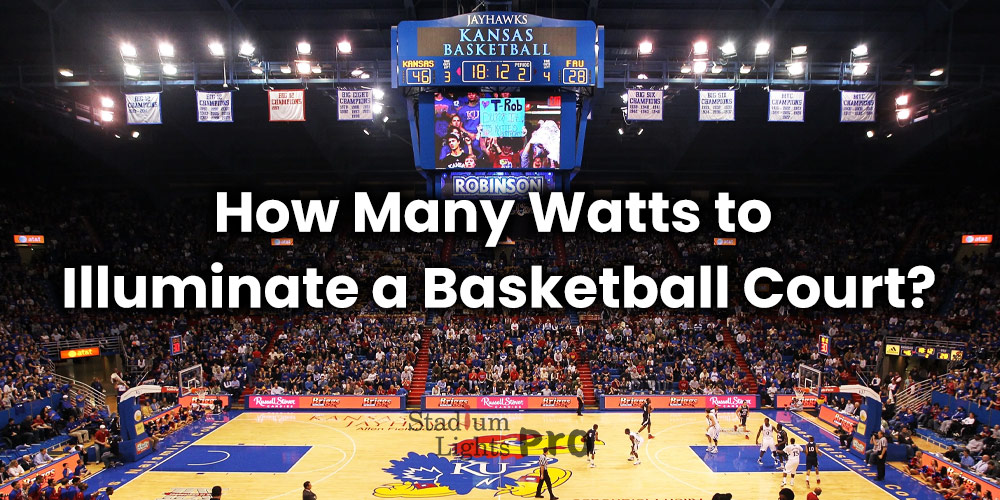The wattage required to light a basketball court can vary depending on various factors, including the size of the court, the lighting standards or regulations in place, the desired lighting level, and the type of lighting fixtures used.
As a general guideline, outdoor basketball courts typically require an average lighting level of around 50 to 100 foot-candles (fc), while indoor courts may require higher levels of around 100 to 150 fc.
Table of Contents
ToggleHow many watts to light a basketball court?
 To calculate the wattage needed, you can use the following formula:
To calculate the wattage needed, you can use the following formula:
Wattage = Area × Foot-Candles ÷ Lumens per Watt
The area is the size of the basketball court in square feet, the foot-candles represent the desired lighting level, and Lumens per Watt is a measure of the efficiency of the lighting fixtures being used.
For example, let’s say you have an outdoor basketball court with an area of 5,000 square feet and you want to achieve a lighting level of 75 foot-candles. If you are using lighting fixtures with an efficiency of 150 lumens per watt, the calculation would be:
Wattage = 5,000 × 75 ÷ 150 = 2,500 watts
So, in this example, you would need approximately 2,500 watts to light the outdoor basketball court to the desired level.
Keep in mind that this is a general guideline, and it’s always recommended to consult with lighting professionals or engineers who can provide more accurate calculations based on specific requirements and lighting standards in your area.
What are the differences between lumens and watts?
Lumens and watts are both measurements used in the context of lighting, but they represent different aspects of light.
Watts (W)
Watts measure the electrical power consumed by a light source or device. In simple terms, it indicates how much energy a lighting fixture consumes. Historically, watts were used as a way to gauge the brightness of a light source, but this is not an accurate method because different types of bulbs can produce different amounts of light while consuming the same wattage. In modern lighting, watts are primarily used to determine energy efficiency and to help estimate electricity costs.
Lumens (lm)
Lumens, on the other hand, measure the total amount of visible light emitted by a light source. Lumens indicate the brightness or intensity of light that is perceived by the human eye. The higher the lumen value, the brighter the light output. Lumens are a more accurate measure of light output compared to watts since they directly reflect the amount of light produced, regardless of the type of bulb or light source.

How to minimize the wattage used for basketball court lighting?
To reduce the wattage used for basketball court lighting, one effective approach is to transition from traditional lighting sources, such as metal halide or high-pressure sodium lamps, to more energy-efficient LED lighting. LEDs (Light Emitting Diodes) consume significantly less energy while providing comparable or even better light output. Here are some steps to follow:
Assess the current lighting system
Evaluate the existing lighting setup on the basketball court. Note the wattage and type of bulbs or fixtures currently in use, as well as the overall lighting design.
Determine lighting requirements
Determine the desired lighting level and uniformity required for the basketball court. Factors such as court size, activity type, and any relevant regulations should be considered. Consult lighting standards or local guidelines to ensure compliance.
Select LED lighting fixtures
Research and select LED lighting fixtures that meet the lighting requirements of the basketball court. Look for fixtures with appropriate lumen output, beam angle, and light distribution to ensure even illumination across the court. Furthermore, consider the color temperature (usually measured in Kelvin) to achieve the desired visual appearance and visibility.
Calculate the lighting layout
Use lighting design software or consult with a lighting professional to determine the optimal placement and quantity of LED fixtures for the court. This step helps ensure adequate coverage and eliminates dark spots while minimizing unnecessary overlaps.
Consider lighting controls
Implement lighting controls to further enhance energy efficiency. Options include occupancy sensors, timers, and dimming systems. These controls can adjust lighting levels based on usage patterns, helping to reduce unnecessary energy consumption.
Install and maintain the new system
Have the LED lighting system installed by a professional electrician or lighting contractor. Ensure proper wiring and alignment of the fixtures. Regularly inspect and maintain the system to ensure optimal performance and longevity.
For more detailed information regarding the wattage requirements for illuminating a basketball court, we encourage you to contact us. Our team of experts is well-versed in lighting solutions for sports facilities and can provide you with comprehensive guidance tailored to your specific needs. Besides, we offer free lighting advice and planning services to assist you in optimizing your basketball court lighting design. Whether you have questions about wattage calculations, fixture selection, or lighting controls, our knowledgeable professionals are here to help. Get in touch with us today to benefit from our expertise and ensure an efficient and effective lighting solution for your basketball court.

